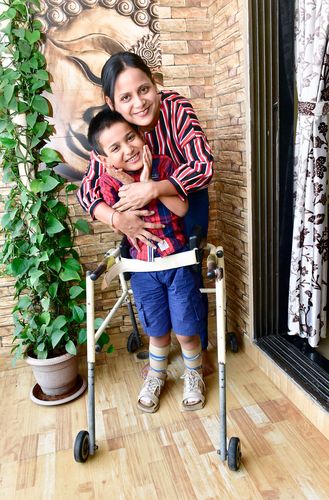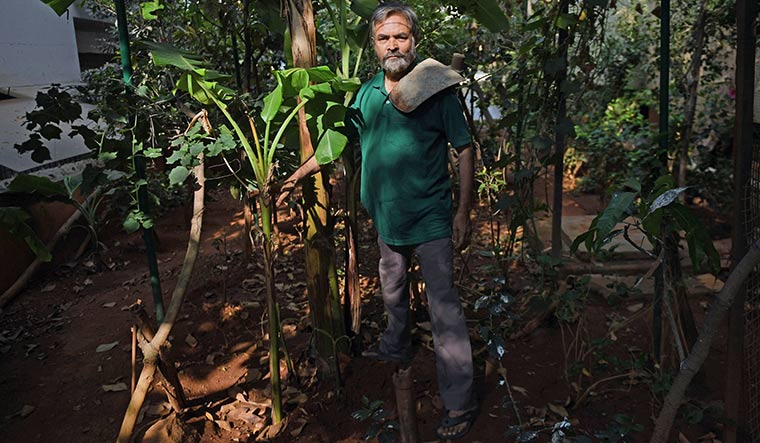Asha Verma was diagnosed with breast cancer 20 years ago. She was 28, and had a one-and-a-half-year-old son. “I was completely broken. The dread of death was so strong in my mind,” she says. A year later, she was to introduced to Hitaishini, a Kolkata-based support group of female breast cancer survivors. “I met so many women who were all in the same boat as I,” she said. “Seeing them sail through each day with cheerfulness and confidence made me realise that my situation was not that hopeless. We shared our own narratives of living through the trauma and fighting it out, and it was so therapeutic that I began to see life inside me. It was like, if they can do it so can I.”
Even today, the 30-year-old group is just as active. The members meet twice or thrice every week and exchange notes on food, medicine, therapies and some tidbits about personal lives. The group provides physical, psychological and emotional counselling and also, at times, financial help to female breast cancer patients across eastern India.
Rinky Chowdhary, who joined Hitaishini in 2012 as a “highly depressed” breast cancer patient, is now an active member of the group. “They helped me when I was at my lowest,” said the 58-year-old who lives with her husband and son in Kolkata. “Financially, too, we were not doing well and Hitaishini took care of the expenditure, right from medicines to chemotherapy to everything in between.”
Though there are many support groups for patients across India, what sets apart Hitaishini, and others like it, is that they comprise of patients or survivors, and their families. Because of these networks, patients and their families have become better organised, and are equipped to handle emergency situations and advocate for access to treatment. “Collectively, through these support groups, individual patients are greater than the sum of their parts,” says Alpana Sharma, mother of Aarav, 7, who suffers from spinal muscular atrophy. It is a rare genetic disease that causes progressive muscle weakness and affects one's ability to walk, stand or sit. Sharma was negotiating “a period of darkness” when her son was diagnosed with SMA six years ago. “At the time, we had no idea how to best care for our son. There weren't any databases or help groups,” says Sharma. So, in 2014, she set up Families of Spinal Muscular Atrophy India, a closed Facebook group that brought together a number of families affected by the disease. Today, with nearly 300 families across India, the Facebook page has turned into the Cure SMA Foundation, which, as Sharma says, “enables families to share their struggles and fears, and campaign for greater awareness and support from medical professionals and the government.”
Such groups help with loneliness, too. N.K. Mohan Ram, a 69-year-old stroke survivor from Bengaluru, says that interacting with stroke survivors from his city's support group made him feel less isolated. “All of us meet once every month and share relevant and up-to-date information on leading healthier and risk-free lives after stroke,” he says. “There are also doctors who come over and talk about different aspects related to stroke. That helps immensely, because somewhere in our minds, there is always the fear of a relapse.”
Ram, who suffered a stroke in 2015, has been a regular at the meetings, held barely a few kilometres from his house. “It is a crucial aspect of the entire recovery process and the more the patient interacts with others who are also suffering, the more he begins to have confidence in himself,” says neurosurgeon Dr Sudheer Ambekar.
A similar initiative, called 'Walk with a Doc', has been launched by Dr Shirish Hastak, a neurologist at Kokilaben Dhirubhai Ambani Hospital. It is inspired by a programme in the US. “For ten years, we had regular group meet-ups of patients at Worli Sea Face,” he says. “But, last year, I changed it into a set-up wherein stroke survivors and a few doctors get together every third Sunday to exchange ideas, information and insights into post-stroke management.”
Before starting the walk, a doctor delivers a 15-minute lecture on a neurological disorder. Thereafter, the group walks for more than an hour before a snack break and an informal one-on-one session. “Thirteen such meet-ups have taken place till now,” says Hastak. “The point is to exercise, educate and empower. We discuss several issues, right from back pain and headache to epilepsy and sleep disorders. Everything pertaining to neurological problems.” The last walk took place in the third week of January.
In Delhi, a group of seven youngsters, who have thalassaemia, has come together to start a patient support group. “We do our day jobs and once every month we meet to work on patient advocacy and policy. We also have workshops and other activities on spreading awareness about the disease,” says Anubha Taneja Mukherjee, 38, who works as a lawyer and was diagnosed with thalassaemia when she was barely three months old.
“The idea is to make the patient feel empowered. We believe that patients must be involved in policy making, too,” says Shobha Tuli, founder member of Thalassemics India and vice president of Thalassemia International Federation which is based in Cyprus.
Another patient support group in Dadar, Mumbai, is a specialised dementia daycare centre that provides counselling to its patients—the youngest of them being 80. “We try to integrate medicine and complementary therapies that will improve their quality of life,” says Vidya Shenoy, who runs SmritiVishwam. “But the support group mainly consists of patients, along with one relative each. We all meet on a regular basis and the relatives share their experiences.” The last such interaction, attended by 15 patients and their family members, took place on Valentine's Day.
“It really helps to know what others are going through and how women my age are coping with their in-laws,” says Wilma Martin, whose mother-in-law Greta Martin, 83, has dementia. “There were times when I used to get frustrated, because I have been handling her for more than nine years now, and have to be on my toes all day. But interacting with others helps a lot because I also get ideas as to how I can better schedule my days and make the most of the time available to me. Also, we get a lot of essential information on the latest advancements in treatment of mental disorders.”
Dr Ratna Devi, who is part of the Gurugram-based Indian Alliance of Patient Groups, says that patient groups must be empowered so that they can exert pressure to change the country's low level of public spending on health. “By providing a platform for the voice of patients, we believe that we can drive patient-centric health care reform in India and bring greater accountability and transparency to health policy decision-making,” she says. “The only way to achieve sustainable universal health coverage is active participation of patients. The key issues facing patients are access to quality health care, lack of correct information on diseases and rampant commercialisation of health care. So, patients and their families really must interact with each other.”




